See also: Anfibio Sigma TXL (2022)
Anfibio Nano RTC
The Anfibio Packrafting Store in Germany was one of the first Alpacka dealers in Europe, but now sells other brands of packrafts from China, Russia and the US. It’s probably the only ‘packrafting supermarket’ of its kind and in 2015 we group tested a selection of their boats.
They also produce their own Anfibio branded packrafting gear, like the dry suit and inflatable jacket I use myself; the latter has become my go-to ‘pfd’ for tame paddles. In cooperation with MRS in China whose boats they were the first to import into Europe and whose design they’ve influenced, they’ve now added three lightweight Anfibio packrafts to their lineup of over a dozen boats: the Sigma TX double; Delta MX single and smallest and lightest Alpha XC which we tested here. I knew the XC would be too small for me so that job went to my g-friend who’s over a foot shorter and 40+ kilos lighter. It costs just €470 plus one type of seat or another.
Alpha symmetry
In a bid to keep costs down and make them the lightest in their class, Anfibios are all symmetrical, with identical bows and sterns and parallel sides. Unless it’s like their double-elongated Barracuda R2, a conventionally short stern can make a boat back-heavy without a balancing load over the bow, as right. Even my original, first-generation green Alpacka Llama had a fattened stern to compensate for this.
This is why Alpacka’s now much-copied elongated stern from 2011 (my 2014 Yak, left) was such a clever innovation. It trimmed (‘levelled’) the boat by effectively positioning the paddler more centrally, and also acted as a skeg to further reduce the side-to-side yawing of the bow which short, wide packrafts are prone to. (It’s important to recognise this yawing is just an annoying left and right ‘nodding’ of the bow; people often confuse it with tracking (‘steering’ or going where you point it) which packrafts do better than some kayaks.
Weights and measures **
After verifying the kitchen scales (1000ml = 1000g: √) the Alpha weighed in at 1822g out of the box; the bare boat was 1422g.
Interestingly, at 120cm the interior length is actually a bit more than my Alpacka Yak. At 185cm tall, I can sit in the Alpha with backrest deflated and with the same comfortable knee-bend as my Yak. Meanwhile, with legs flat on the floor, g-friend has some 15cm of foot room to spare up front.
Anfibio have missed a trick here. Assuming I’m at the upper level of average adult height and weight, and geef is at the other end, I think Anfibio could offer another model 10 or even 20cm shorter, more like Alpacka’s ultrabasic Scout (left); let’s call it an Omega XS.
There are many, many packrafts for people of my height or more, but very few for 5-footers if you take the view as I do, that in a packraft you want to fit snugly, feet pressing against the bow with knees slightly bent. Being shorter would make the ‘Omega’ at least 200g lighter and enable that snug fitting for the majority of shorter-than-me persons. Like a shoe that fits right, that means better control, comfort and efficiency and is one reason I choose to replace my original Llama with the shorter Yak.
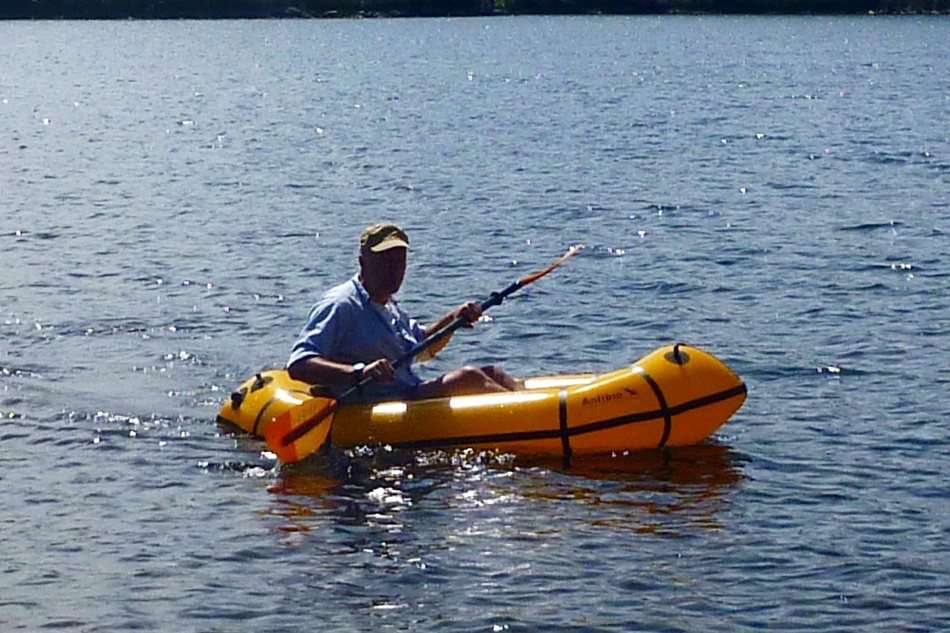
Perhaps there are buoyancy issues in such a short boat which means tubes need to be fatter, speed suffers and you effectively end up in a slackraft. You don’t want that.
The 25-cm side tubes are the slimmest of the Store’s dozen-plus boats, but we both found the 32cm interior width, a bit tight for comfort. Slimmer hipped individuals will feel right at home. All this doubtless carefully juggled volume, length and width adds up to a recommended payload rating of just 110kg. That’s plenty for most folks who are lighter than me. The next-size-up Anfibio Delta MX weighs only another 225g but is rated at a massive 180kg.
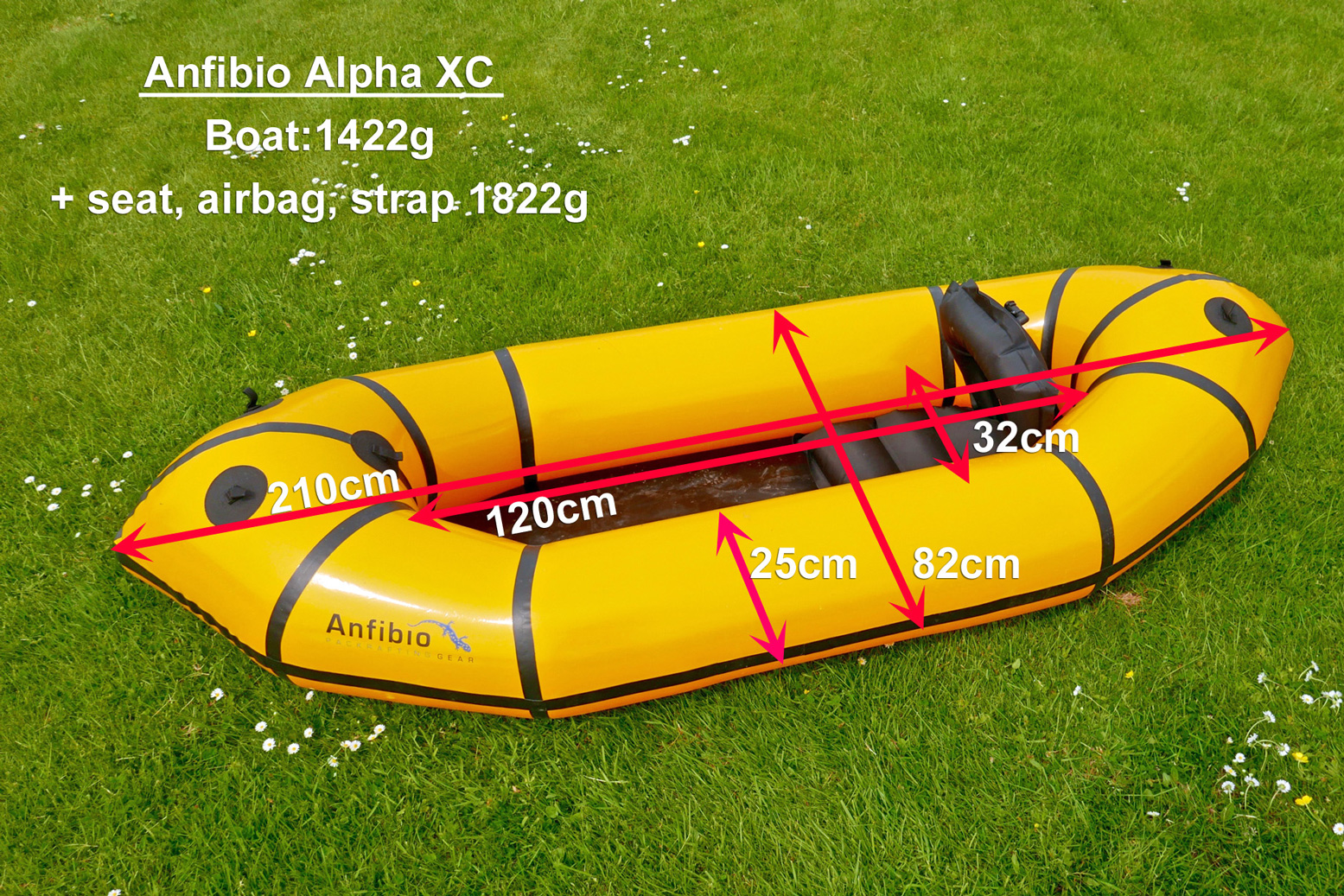
The hull is made from the 210D, single-coated TPU, sewn and heat welded (no glue). Most packrafts are made from this wonder fabric. I think the slight translucence of the yellow Alpha makes it appear thinner than my Alpacka Yak, but feeling the fabrics up, they’re very similar.
You’ll notice that, unusually, the taped join of the tubes is around the perimeter of the boat, not hidden under where the floor attaches to the hull.
The floor is smooth, double-coated 420D TPU and feels tough without making the boat bulky when rolled up. The width of the heat-welding attaching it to the hull is little more than a centimetre in places. Perhaps putting the side tube join elsewhere eliminates a weak spot at the floor and reduces the need for excessive overlap, as with the 8cm on my Yak or the Longshore. As it is, we’re assured that TPU hull fabric will tear before a properly heat-welded join separates, but as with any packraft, I’d be careful putting too much pressure on the floor. “Get in bum first!” I had to remind my tester.
Fittings and finish
The Alpha comes with 5 taped loops with a pleasing textured Cordura finish to the patches. As other reviewers and the commenter below have mentioned, the three on the bow look too close together to securely lash down a load, far less a bike; the ‘triangle’ is too small and positioned over the domed bow. I also feel the fitting points are the wrong way round: you want the single central point at the front and the other two behind on the next panel back. Glue two here and you’ll have a stable, 4-point lashing base with another tab to spare.
I don’t really see the value of attachment points on the already over-loaded stern of a packraft, especially when it’s not elongated. I’d sooner load stuff centrally, under my knees and have a single loop here to hang shoes off or for towing.
The inflation valve follows MRS’ innovation in fitting a Boston valve as commonly found on cheap Slackrafts (about the only useful thing on them). For a short, low-pressure boat like a packraft (as opposed to an IK) Boston valves are ideal.
A Boston valve has two caps; the bigger one opens the main port for fast inflation / deflation. On top of that is a smaller square cap; unscrew that to access the one-way mushroom/flap valve and top-up the boat by mouth. Both caps also have nifty swivelling attachment collars so you can’t lose them while also making the caps easy to turn. The whole set-up is so much better than my old-Alpacka style dump valve which you need to secure with a line which gets in the way as you try and quickly screw it up. It also eliminates the separate twist-lock elbow valve which never felt that solid and being small bore, are harder to blow through and get a good fill, unlike the 2cm-wide Boston.
The supplied air inflation bag (see video here) is a denier or two up on my flimsy Yak one which I often think is on the verge of ripping apart. I also like the fact that it’s a bright dayglo green; you never know when you might need a signalling device.
The seat resembles an old-style Alpacka base with backrest, except that it cleverly attaches to the back of the floor with a single adjustable strap and buckle. Simple and effective; that is all that is needed to keep the light seat in place compared to my Yak’s OTT arrangement. You also suspect that the length of this strap may have been designed to enable a shorter paddler to position the seat a little forward so as to shove a bag behind it (below). Doing this centralises their weight and helps level off the trim to reduce yawing. We tried this idea on the water – see below.
One thing I recall of a similar seat on my old Llama was the annoyance of the backrest flopping forward every time I got in (an elastic fixed that). Taller Alpha XC paddlers: consider saving €34 by ordering the plain seat base and simply lean on the back of the boat instead of using the €59 backrest version. That’s what I did briefly paddling the Alpha and it felt fine.
As for build quality. With only my 2014 Alpacka to compare, all the taping and fitments are as neatly applied. The lack of tape over the floor panel join exposes a slightly uneven cut in places and, as mentioned, the welded band interface looked rather slim. As a result of all this weight saving the Store rates the Alpha’s durability accordingly, but it’s unlikely they’ve gone too far as Alpacka may have done with their short-lived Ghost.
Yes but what about the strap, you ask? Well that weighs in at 22g but is a good half-a-metre longer than it needs to be to cinch the rolled-up bundle (below), so some weight could be saved by snipping it.
On the water
With light winds forecast, we picked an easy circuit with about 4km of loch paddling and a couple of short portages where we could carry the inflated boats. We often paddle together in the Seawave but I’m not sure if the g-friend has paddled a packraft since a quick go in my Llama back in 2010. So this would be a good test on how a beginner handled the Alpha.
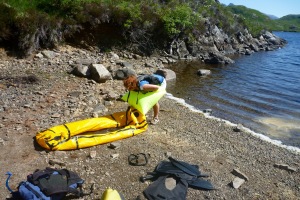

Once the Alpha was inflated, geef went out for a spin to get a feel for the boat, then came back and went out again with my empty Chattooga dry bag behind the seat back (this bag seals 100% against air leakage – a true ‘dry bag’). No surprise: she yawed less and felt more in control sat more centrally.
With another bag of stuff under her knees the boat sat almost level. Watching her paddle she still looked a bit low in the boat which interfered with a good paddling technique, so we pulled over and pumped the seat right up and I advised trying a high-angle paddling to clear the sides and get a fuller draw from the blades. As it is, on flat water no packraft is actually that satisfying to paddle – unlike a slick kayak there is no glide. The fun lies in the places they can reach and the ease of getting them there.

We emerged onto the west end of Sionascaig loch (above) surrounded by the dramatic mountains of the Assynt, and turned south for the sluice. Being thorough, we tried sat right back without the bag one more time, but got the same high-bow yawing. Even with the bag I still observed some yawing, but as it was intermittent it could be down to my test pilot’s as yet unrefined packraft paddling knack, just as it can be trying to get a hardshell to go straight the first few times. Yawing is not tracking – this boat will go where you point it, but you’d imagine pivoting is inefficient. A bit like moving off from standstill on a bicycle, my Yak also yaws wildly as I set off, but settles down once there’s some directional momentum, nodding maybe six inches left and right.
We clambered around the sluice (above) and sat down on a tiny beach below for a snack, then I went out for a quick spin in the Alpha.
At nearly twice the weight and of course without the dry bag behind, the boat was back heavy and very easy to spin. A light breeze was now blowing little wavelettes up the loch and powering on too hard, it shipped a little water over the back sides.
I reached back and felt the horizontal tape line was below the water, but the Alpha was nowhere near as edgy as the Supai Flatwater Canyon II in which I dared not even breath in too fast. Yes it yawed more than my Yak but long, smooth strokes minimise that. I’d be more concerned in less calm water, but then I’m clearly on the weight limit for the Alpha. I probably could have done this whole circuit in it but it would have not conducive to relaxation.
Through the shallow narrows we passed, arriving at the next ‘sluice’ at the end of the loch. It’s actually a runable two-foot drop if you take it fast. Like last time I came here, I wondered about trying it for fun, but chickened out. Beyond the pool below it becomes steep, narrow burn dropping to the next loch. So we tramped through the springy heather made crisp by over a fortnight without rain. We chucked the boats over a nasty wire fence then set off across the last little loch and the short walk back to the car.
Bravo Alpha
Being a large person, the benefits of saving a kilo or two add up to not much in my overall packrafting mass. Therefore I don’t resent the weight of my Yak for its benefits in durability and functionality. But not everyone thinks like me. Adventure racers, canyoneers and something called ‘fast-packers’ focused on absolute minimal weights while undertaking short or easy crossings will love this boat. So too might a travelling cyclist or a light person who just wants a handy, inexpensive packraft for the odd evening splashabout rather than an expedition-ready heavy hauler. The yawing is something you can minimise with good technique or balance-out with frontal loads or weight shifting, as we did.
For the price of just €470 + seat, this must be the cheapest decent packraft around. No one likes excess weight but I know I’d feel more confident paddling a proper TPU packraft like the Alpha over Supai’s amazingly light but unnervingly skimpy alternatives The extra 700 grams I can save in peace of mind.
Anfibio Alpha XC at the Packrafting Store

We also tried out the Longshore EX280 double. Read about it here.




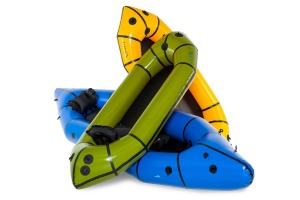

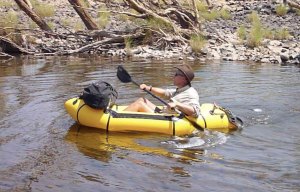
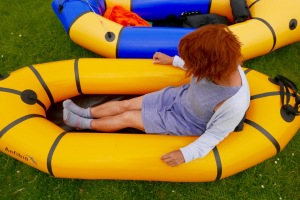

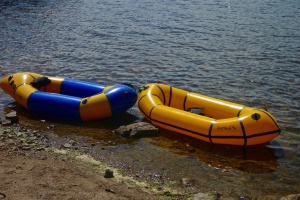
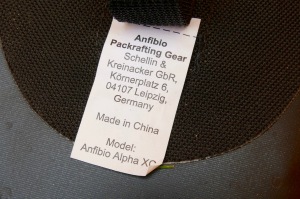
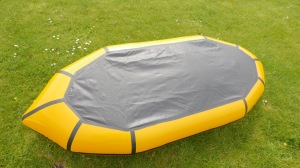
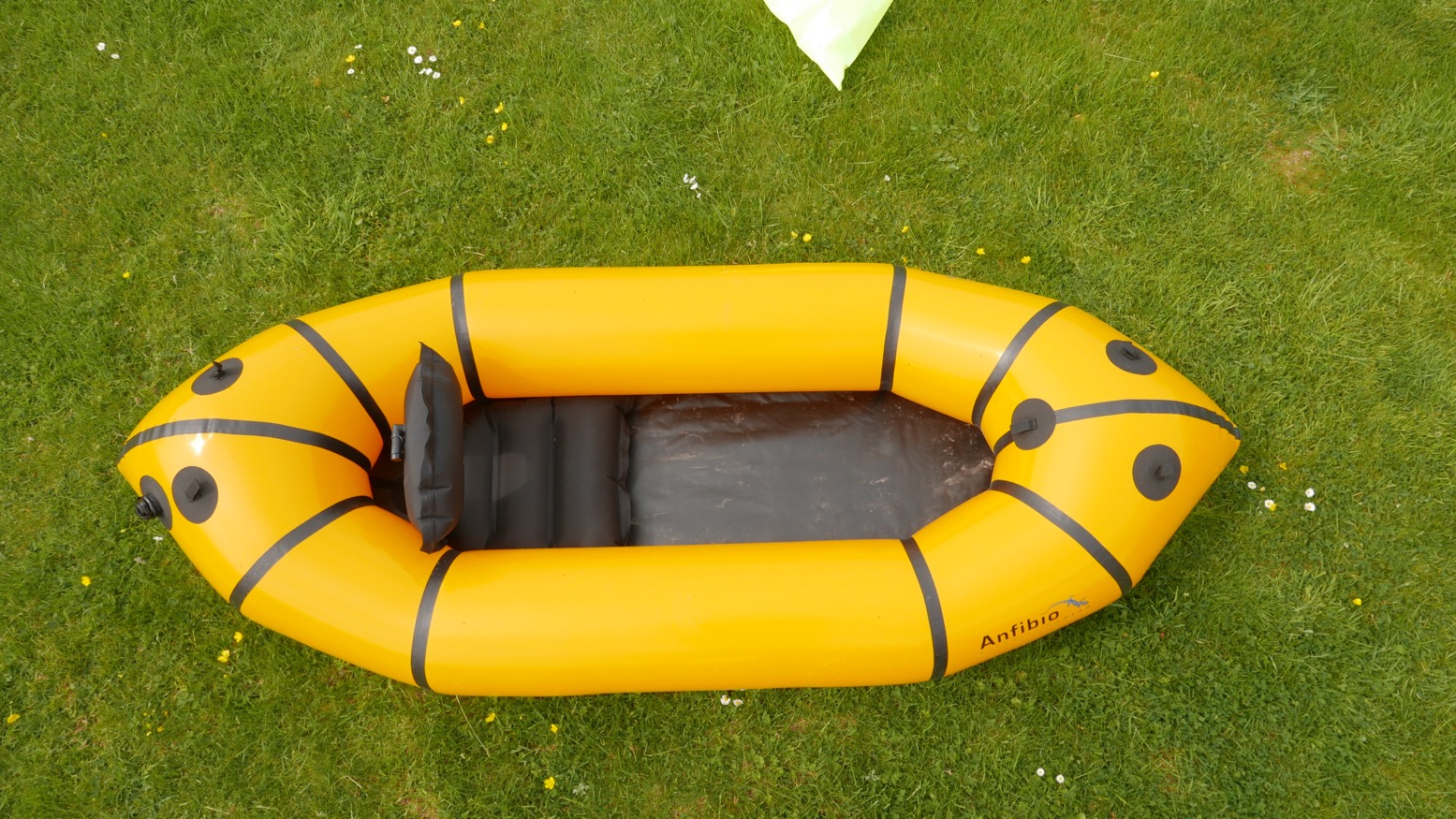



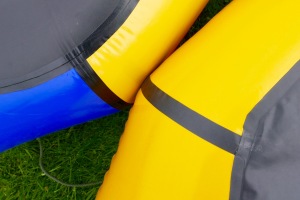
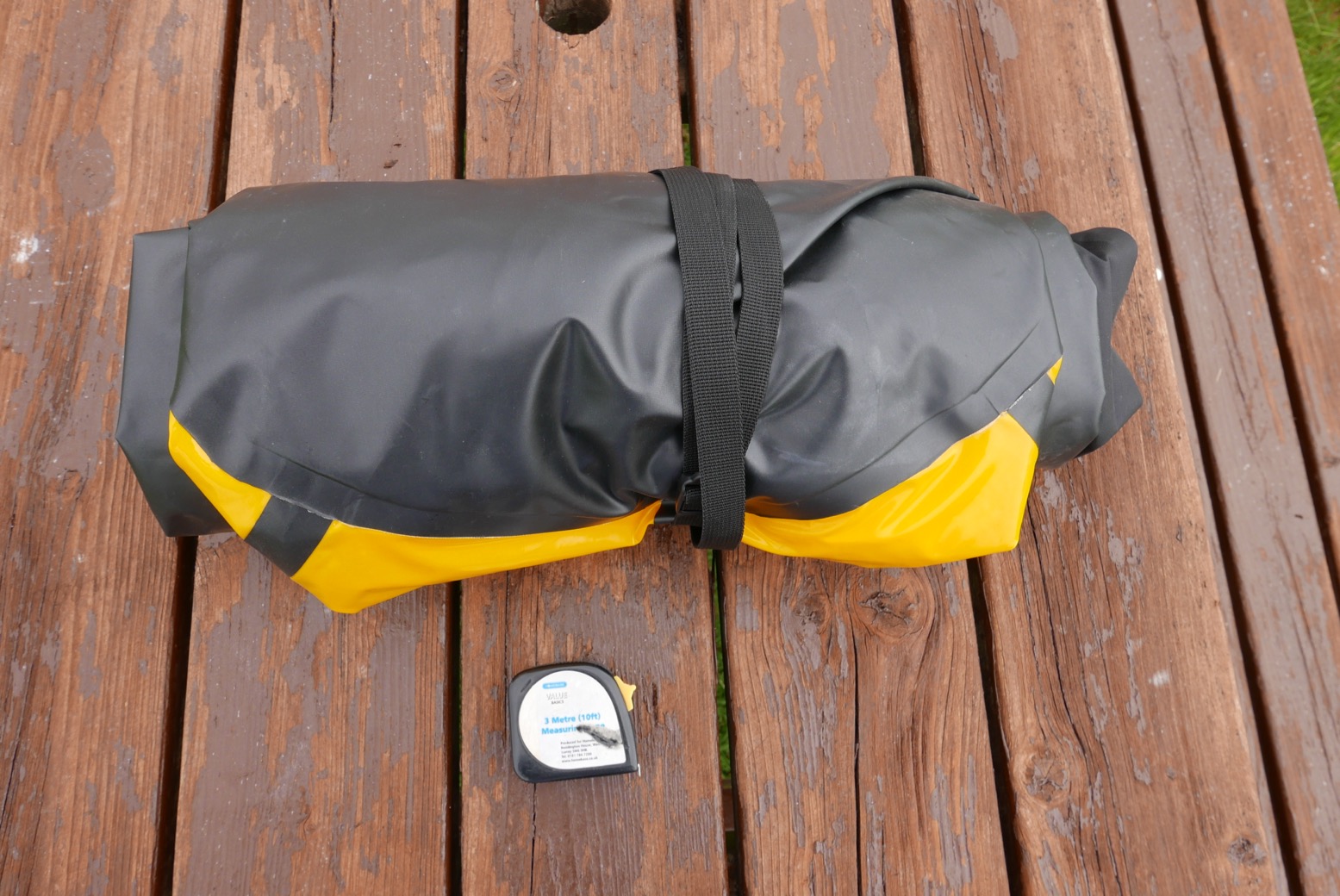
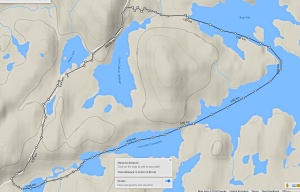




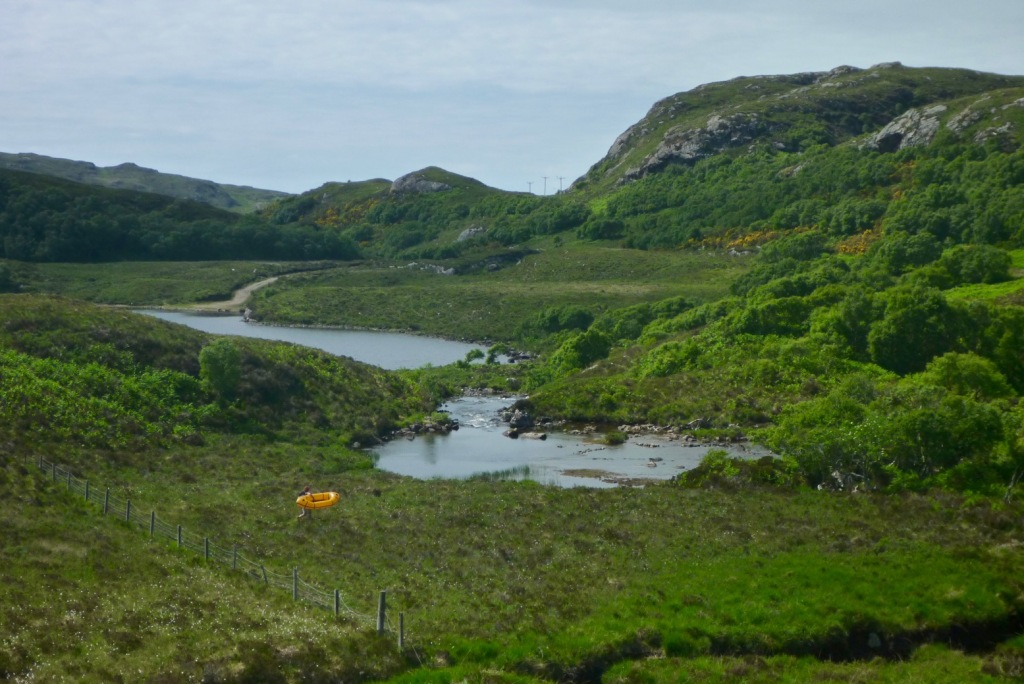

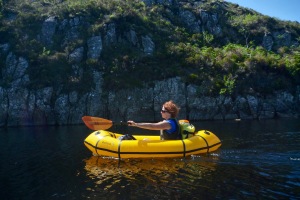
Interesting review, as always. I too have a lot of respect for Anfibio gear, I use a Buoy Boy PFD and one of their Zipsuit drysuits. Very pleased with both. I thought about the Alpha XC, but the width and weight capacity put me off. Looks like I made the right decision. Nearly went for the Delta MX but was concerned about the symmetric design vs extended stern. Then discovered the Klymit LWD; a cracking little raft, under 1 Kg, yet with 158 Kg buoyancy. And cheap. It is quite wet, a drysuit is almost obligatory, and a back-support is needed unless you are happy paddling flat on your back (I use one of the seats from my MRS Adventure X2 (also from Anfibio). I wouldn’t use it on mostly water trips but where the walk/raft ratio is nearer 50/50 it gives a good balance of capability vs weight; boat, pfd, drysuit & paddle are under 3Kg extra packweight, an acceptable weight penalty in my opinion. On trips using the Adventure X2 (single-crewed), pack weight has been about 25 Kg, Hard work walking.
LikeLike
Thanks Martin. yes, extended stern is a great innovation if you are leaning on the back. I must say I never liked the look of the Klymit LWD. Saw some video and it looked as floppy as a slackraft. But maybe a good crossraft.
LikeLike
A good review thanks. I have an Alpha XC and (more recently) an Alpacka Gnarwhal. I’m very happy with the Alpha, it’s light, simple, well-made and surprisingly solid. It seems fine in easy whitewater though of course you ship quite a lot of water. Completely agree with you that the front attachments would be better if the triangle was reversed and moved further back.
LikeLike
Thanks. How are you getting on with your Gharwhal? Deck or bailer?
LikeLike
It has a ww deck. I like it a lot. Obviously it’s going to have a lot more potential (more than I do at the moment) in moving water. Noticeably heavier and bulkier so it will be good to have both and for when my wife can get out with me.
LikeLiked by 1 person